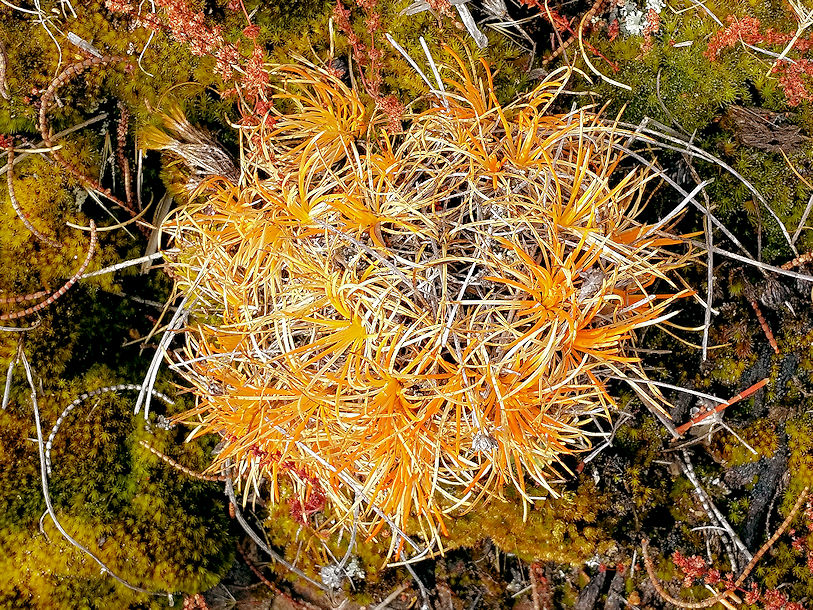Yilliminning Rock in November wasn't on my visiting list until I heard that the Elbow orchid was flowering, and was really glad that I went back. I went there about 7am which is a great time to see the morning light painting the shrubs and fluffy grass (species?), and to climb the rock when it is cool. The glowing yellow-green shrub patches amongst the salmon gums/wandoos are Leptomeria pauciflora (a native currant), yet another hemiparasite plant in the same family as quandongs. As I learn more about insignificantly flowered plants, I realise how many hemiparasites there are.

On the north and southern slopes where it is too steep for 4WDs (but I expect to see one in a heap there one day), you can still see the shelves and plates of sheet rock that are a feature of large granite domes.
For the geologically minded (as one should be!) these domes called plutons formed hundreds of millions of years ago from molten rock that forced its way up as geological plates were colliding and solidified some kilometres below the soil surface. As the rock above gradually eroded away and sediments were taken to the sea, these domes were exposed. The surface cracked in sheets that themselves split into jointed blocks from removal of the weight above them and weathering (exfoliation). Ice crystals formed from frost affected seepage can cause splits. More information here.
Unfortunately the rock sheets are also greatly desired in gardens. I even have one in my garden that was left by the former owner. Keep vehicles off this rock.








